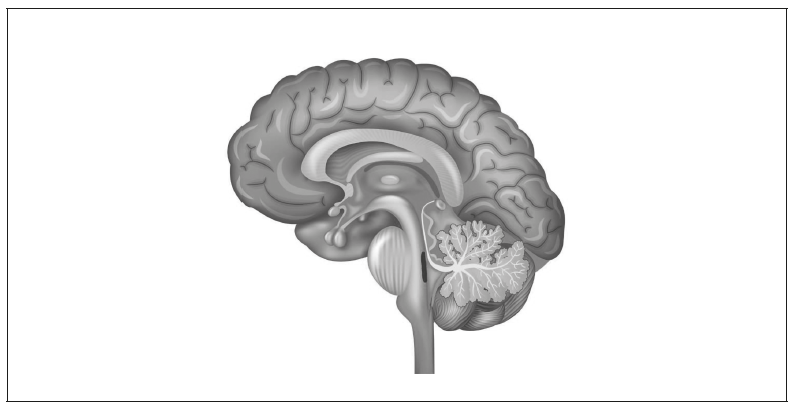Question
b. Outline the development of axons in immature neurons. [2]
e. State one activity controlled by the medulla oblongata. [1]
▶️Answer/Explanation
Markscheme
a. axon grows from an «immature» neuron
b. chemical stimuli trigger the growth/direction of axon
c. only one axon develops per neuron
d. some axons extend beyond neural tube to reach other parts of body
gut muscles / heart rate/cardiac centre / vasomotor / breathing/ventilation rate / reflex centre of vomiting/coughing/sneezing/swallowing
Question
The drawing shows a vertical section through the brain.

a.i. Label the cerebellum on the diagram. [1]
a.ii. State a function of the cerebellum. [1]
b. On the diagram, label one named structure that produces hormones. [1]
c. Outline one method that can be used to investigate the function of different parts of the brain. [2]
▶️Answer/Explanation
Markscheme
label to cerebellum

controls/coordinates (motor) movements/balance
label to pituitary
OR
label to hypothalamus;
Alternative 1:
a. fMRI;
b. scan detects changes in blood flow/oxygen in blood
OR
more active parts of brain receive more blood flow;
Alternative 2:
c. lesions/autopsy;
d. part of the brain damaged
OR
loss of function detected;
Alternative 3:
e. stimulation during open brain surgery;
f. reaction observed;
The “f” must be written for fMRI.
Description must relate to method named.